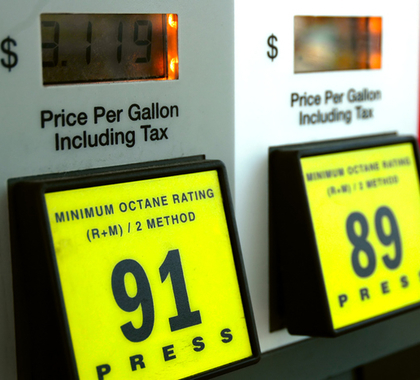Public Input by The Heartland Institute Regarding the Transportation and Climate Initiative
Timothy Benson, Policy Analyst
The Heartland Institute
February 10, 2020
The Transportation and Climate Initiative (TCI), as you well know, is a cap-and-trade program designed to limit carbon dioxide emissions from the transportation sector in order to ward off climate change. It is the opinion of The Heartland Institute that this program will penalize people, especially low-income individuals, for simply living their lives, all in the attempt to decrease global temperatures by an amount so miniscule as to be environmentally meaningless.
Despite claims from supporters, cap-and-trade programs such as TCI and its sister program, the Regional Greenhouse Gas Initiative (RGGI), do little to reduce carbon dioxide emissions. Even worse, they are basically nothing more than regressive taxes. Cap-and-trade programs like TCI disproportionally burden low-income households, many of whom can’t afford the higher energy and gasoline costs these programs are designed to produce. Estimates published at the National Bureau of Economy Research find that, under cap-and-trade programs like TCI, “households in the lowest fifth of the income distribution could shoulder a relative burden that is 1.4 to 4 times higher than that of households in the top fifth of the income distribution.”[1]
The more someone pays at the pump means the more they have to pay to drive to and from work, or drop off the kids at school, or run errands. Naturally, it also means there is less they can afford to save or use for food, rent, mortgage payments, utility bills, etc. For a small business that is heavily reliant on transporting its goods or, say, a skilled tradesman like a plumber who needs to drive to and from clients, the choice is either to accept a smaller bottom line or to pass off your increased costs to your customers. Either way, this is a lose-lose proposition.
A Manhattan Institute study estimates the California cap-and-trade program raised residential electricity costs by as much as $540 million in 2013.[2] California’s Legislative Analyst’s Office (LAO) estimates cap-and-trade will increase gasoline prices by 15 to 63 cents per gallon by 2021, and by 24 to 73 cents per gallon by 2031.[3] LAO projects Californians will spend an additional $2 billion to $8 billion on gasoline by 2021.[4] It also estimates the increased gasoline prices will cost $150–$550 per household by 2026.[5]
Another estimate of the program, done in 2017 by the California Energy Commission, found gasoline prices have already increased by 12 cents a gallon, with diesel prices increasing by 14 cents a gallon.[6]
It should also be noted that retail electricity prices in the Golden State are also 58 percent higher than the national average.[7] Prior to the enaction of its cap-and-trade program, they were only 40 percent higher.[8]
In a Cato Journal article released in 2018, David T. Stevenson of Delaware’s Caesar Rodney Institute writes there are “no added reductions in carbon dioxide emissions, or associated health benefits, from the RGGI program. RGGI emission reductions are consistent with national trend changes caused by new EPA power plant regulations and lower natural gas prices. The comparison requires adjusting for increases in the amount of power imported by the RGGI states, reduced economic growth in RGGI states, and loss of energy intensive industries in the RGGI states from high electric rates.”[9]
Even by your own admission, a fully-implemented TCI would only produce a 5 percent carbon dioxide reduction by 2032.[10] This is not a meaningful reduction. A temperature decline of less than a thousandth of a degree by 2100, which is what a fully-implemented TCI would produce, is not a meaningful reduction.[11] Yet to make this insignificant reduction, you would (again, by your own admission) instantaneously raise gasoline prices around 17 cents per gallon, which would cost fuel distributors around $7 billion a year. That insignificant reduction simply doesn’t seem worth the cost, considering the economic harm that would come to the citizens of the TCI states.
As a coalition letter from many of our esteemed sister think tanks notes, TCI is a “poorly conceived, fundamentally regressive, and economically damaging proposal.[12] It would—on purpose—make the day-to-day transactions of life painfully expensive, especially for those … who are going through bad times and are struggling every day to get by.” Although I don’t expect you to, the best thing you could do for the residents of the states involved in the Transportation and Climate Initiative is to simply fold up shop and not try to purposefully lighten their wallets and pocketbooks.
For more information about The Heartland Institute’s work, please visit our Web site at www.heartland.org or http:/news.heartland.org. Feel free to call us at 312/377-4000 or email us at [email protected].
[1] Corbett & Grainger & Charles D. Kolstad, “Who Pays a Price on Carbon?”, NBER Working Paper No. 15239, The National Bureau of Economic Research, August 2009, https://www.nber.org/papers/w15239.pdf.
[2] Jonathan A. Lesser, “Less Carbon, Higher Prices: How California’s Climate Policies Affect Lower-Income Residents,” Energy Policy & the Environment Report No. 17, Manhattan Institute for Policy Research, July 30, 2015, https://media4.manhattan-institute.org/pdf/eper_17.pdf.
[3] Mac Taylor, “Letter to Hon. Vince Fong,” California Legislative Analyst’s Office, March 29, 2017, https://lao.ca.gov/letters/2017/fong-fuels-cap-and-trade.pdf.
[4] Ibid.
[5] Ibid.
[6] Severin Borenstein, et. al., Petroleum Market Advisory Committee Final Report – December 2014 to December 2016, California Energy Commission, August 2017, https://ww2.energy.ca.gov/business_meetings/2017_packets/2017-09-13/Item_01a.pdf.
[7] U.S. Energy Information Administration, “State Electricity Profiles,” December 31, 2019, https://www.eia.gov/electricity/state/.
[8] Wayne Winegarden, Legislating Energy Poverty: A Case Study of How California’s and New York’s Climate Change Policies Are Increasing Energy Costs and Hurting the Economy, Pacific Research Institute, December 5, 2018, https://www.pacificresearch.org/wp-content/uploads/2018/12/LegislatingEnergy_F_Web.pdf.
[9] David T. Stevenson, “A Review of the Regional Greenhouse Gas Initiative,” Cato Journal, Vol. 38, No. 1, February 7, 2018, https://www.cato.org/sites/cato.org/files/serials/files/cato-journal/2018/2/cato-journal-v38n1-chapter-11.pdf.
[10] Transportation & Climate Initiative, “Webinar: Draft Memorandum of Understanding & 2019 Cap-and-Invest Modeling Results,” December 17, 2019, https://www.transportationandclimate.org/sites/default/files/TCI%20Public%20Webinar%20Slides_20191217.pdf.
[11] Brent Bennett, “Data: Banning fossil fuels wouldn’t stop climate change,” Life:Powered, November 6, 2019, https://lifepowered.org/data-banning-fossil-fuels-wouldnt-stop-climate-change/.
[12] Institute for Energy Research, “TCI Open Letter,” December 19, 2019, https://www.instituteforenergyresearch.org/wp-content/uploads/2019/12/TCI-Opposition-Letter.pdf.




